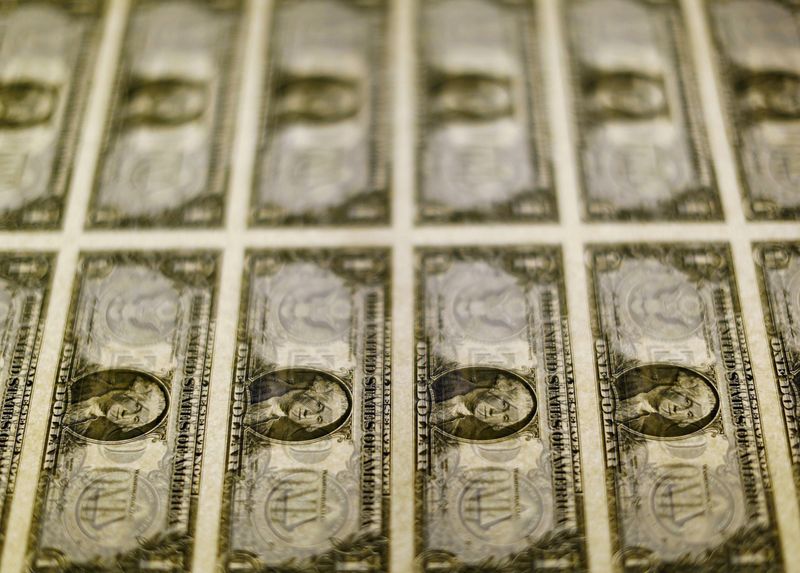Creator: Joyce Alves and Brigid Riley
LONDON/TOKYO (Reuters) – The greenback rose on Wednesday as buyers awaited Federal Reserve assembly minutes for perception into the central financial institution’s rate of interest path, whereas sterling steadied after information confirmed British inflation fell in April.
Buyers have been bolstering bets on U.S. rate of interest cuts after delicate inflation information final week, whilst Fed officers proceed to sound cautious.
Federal Reserve Governor Christopher Waller mentioned on Tuesday that he would want to see a number of extra months of excellent inflation information earlier than he would really feel comfy supporting a fee reduce.
Cleveland Fed President Loretta Mester additionally agreed with the timeline.
Scope chief market analyst Joshua Mahony mentioned: “Immediately’s FOMC (Federal Open Market Committee) assembly minutes present vital insights into the Fed’s pondering earlier this month, with merchants eager to guage Is a fee reduce at the moment priced in September potential?
The minutes of the Federal Reserve’s April 30-Could 1 assembly launched later within the day might replicate extra considerations about higher-than-expected U.S. inflation within the first quarter, because the assembly came about after shopper worth inflation final week. The enlargement report was held earlier than it was launched.
Analysts mentioned that whereas the market stays hopeful that U.S. inflation will proceed to chill, the PCE information launched on Could 31 would be the key check.
Towards a basket of currencies, it rose 0.26% to 104.91, hitting a one-week excessive and above final week’s five-week low of 104.07.
BOE JUNE reduce fade
The pound stabilized after leaping after British inflation information, which didn’t sluggish as a lot as anticipated however got here near the Financial institution of England’s April goal, prompted buyers to withdraw bets on a fee reduce subsequent month. [GBP/]
UK shopper costs rose 2.3% year-on-year in April, slower than the three.2% improve in March. Economists polled by the Financial institution of England and Reuters had forecast annual rates of interest of two.1%.
Cash markets at the moment see solely a 15% likelihood of a fee reduce in June, in response to LSEG information. Pricing in derivatives markets earlier this week recommended merchants have been pricing in a 55% likelihood of a primary fee reduce in June.
Sterling edged down 0.06% to $1.2702, after hitting a two-month excessive of $1.2761. The euro fell to a two-month low in opposition to the pound, final down 0.23% on the day, at 85.21 pence.
Jeremy Stretch, head of G10 international change technique at CIBC Capital Markets in London, mentioned the repricing of rates of interest triggered by the inflation information appeared extreme.
He mentioned: “We’d notice that the pound’s rebound proves to be short-lived because the fast change in fee reduce expectations appears overdone, particularly with tomorrow’s companies PMI information displaying indicators of shopper weak spot.”
Elsewhere, the Federal Reserve Financial institution of New Zealand saved the benchmark money fee at 5.5% as anticipated, however raised its forecast for peak rates of interest at its newest financial coverage assembly as a consequence of stubbornly excessive inflation.
Charges at the moment are anticipated to peak at 5.7% on the finish of 2024, in contrast with 5.6% three months in the past.
The New Zealand greenback rose to a most of $0.6152 in opposition to the US greenback, its highest degree since March 14.

Issues about Tokyo intervening within the forex nonetheless preserve merchants cautious, following a number of questionable rounds of intervention earlier this month.
USD/JPY rose 0.26% to 156.61. Knowledge confirmed that Japan’s exports elevated by 8.3% year-on-year in April, and the yen change fee was nearly unchanged.
